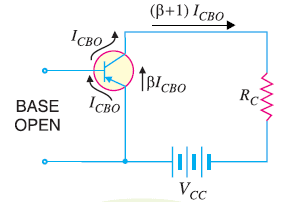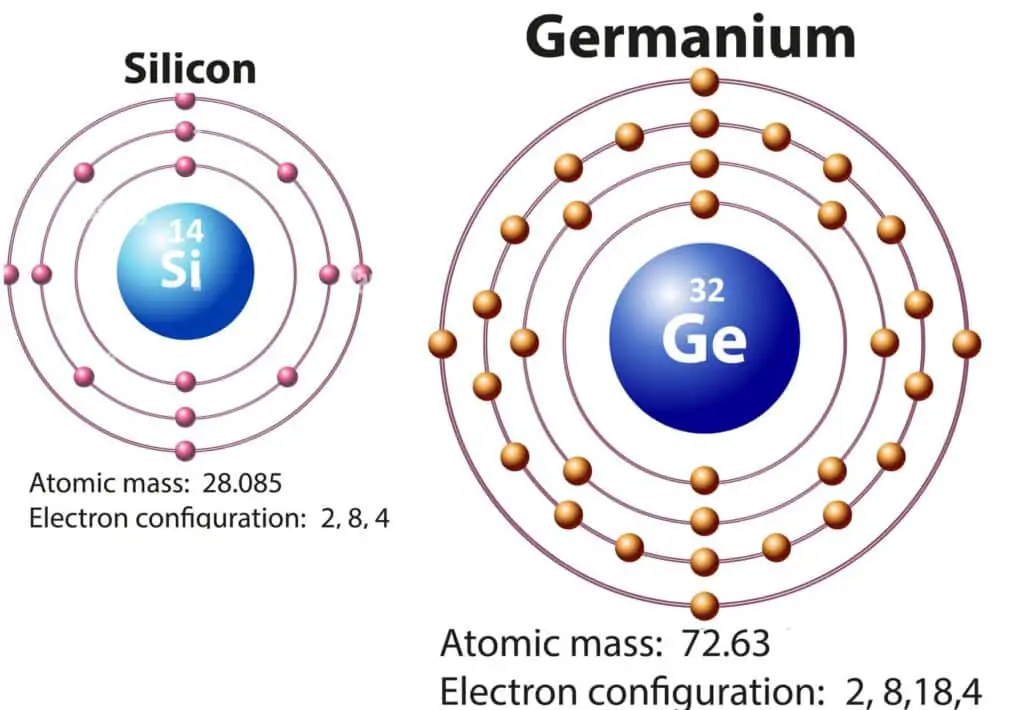Silicon is preferred over Germanium because silicon can work at a higher temperature in comparison to germanium. Other than this, there are many many advantages associated with silicon semiconductors. In this article, we will discuss the features of silicon & germanium to understand why Silicon is preferred over Germanium.
Both Silicon and Germanium fall into the semiconductor material category. But, silicon as a semiconductor material is a good choice in making semiconductor devices. The main reasons for use of silicon are given below.
Why Silicon is better than Germanium?
The silicon is better than germanium because of the following reasons.
Small Reverse Leakage Current (ICBO)
Semiconductor devices are prone if the temperature rises above their specified temperature range. The leakage current increase with an increase in temperature. If we compare the silicon and germanium for the leakage current, the leakage current of the silicon crystal is less than the germanium crystal.

The reverse current in the silicon is in the order of the nano amperes, whereas the reverse current in the germanium is in the order of microamperes. The reverse leakage current in germanium is 10 to 100 times the reverse current in silicon diode.
The typical values of ICBO at 25°C for small signal transistors are:
| Semiconductor Materials | Leakage Current (ICBO) |
| Silicon | 0.01 µA to 1µA |
| Germanium | 2 to 15 µA |
Smaller Variation of leakage current with Temperature
The operational reliability of the semiconductor materials depends on the operating temperature of the device. The junction of the semiconductor is apt to fail if the device operates above its rated junction temperature. The semiconductor materials have a negative temperature coefficient and their resistance decrease with an increase in junction temperature.
If we compare silicon and germanium the decrement of the resistance of germanium with an increase in temperature is more than the decrement of the resistance of silicon with the same temperature rise.
The forbidden energy band of silicon and germanium is 1.1ev and 0.66ev respectively. The higher forbidden energy band of silicon makes it more stable, and thus reduces the leakage current.
The leakage current ICBO of germanium becomes doubles with each 8 to 10°C rise in temperature, whereas the leakage current of silicon doubles with each 12°C rises in temperature.
Good Temperature Stability
Temperature stability is defined as the performance of semiconductor devices with a change in the operating temperature. Therefore, a device that has good temperature stability gives a more reliable operation.
The temperature stability of silicon is better than germanium. The silicon crystal functions well in the temperature range of 140 ° C to 180 ° C, whereas the germanium functions reliably up to 70 ° C.
The germanium fails at about 100°C. We can operate silicon up to 180°C. Therefore, silicon devices are not inclined to fail up to 180°C.
High Reverse Breakdown Voltage( PIV)
The higher PIV is desirable for high voltage rectification. Peak inverse voltage(PIV) is the reverse voltage that a diode sustains during its reverse biasing.
The high reverse breakdown voltage or PIV of the Si diode has a reverse breakdown voltage of about 70 to 1000 V, while the PIV of the germanium diode is about 50 V.
Large Forward Current
Silicon is the most suitable for high current applications because it has a very high forward current in a range of ten amps or even more, while germanium diodes have a very low on-state current in a range of microamps.
Good for High Power Applications
Silicon-based semiconductor devices can deliver high power up to 50 Watts, while germanium can only deliver power below 10W.
Cost-effective
Silicon is abundantly available on the earth’s surface. On the other hand, germanium is a rare material that is typically found in copper, lead, and silver deposits. Also, the processing cost of the silicon is less than the germanium. Overall, silicon is cheaper than germanium.
The only disadvantage of silicon in comparison to germanium is that the cut-in voltage of silicon diode is 0.7 volts, while the knee voltage or cut-in voltage of germanium diode is 0.2 volts. This means a higher voltage is required for the conduction of silicon.

But considering the advantages listed above, we can conclude that Silicon is the best for semiconductor devices and applications.
Summary
Now, we can tabulate the points in the support of why Silicon is Preferred over Germanium.
| S.No. | Parameter | Silicon | Germanium |
| 1 | Reverse Leakage Current (ICBO) | Low | High |
| 2 | Variation of leakage current with Temperature | Low | High |
| 3 | Reverse Breakdown Voltage( PIV) | High | Low |
| 4 | Forward Current | High | Low |
| 5 | Power handling capacity | High | Low |
| 6 | Cost | Low | High |
| 7 | Temperature Stability | Good | Poor |
Read Next: